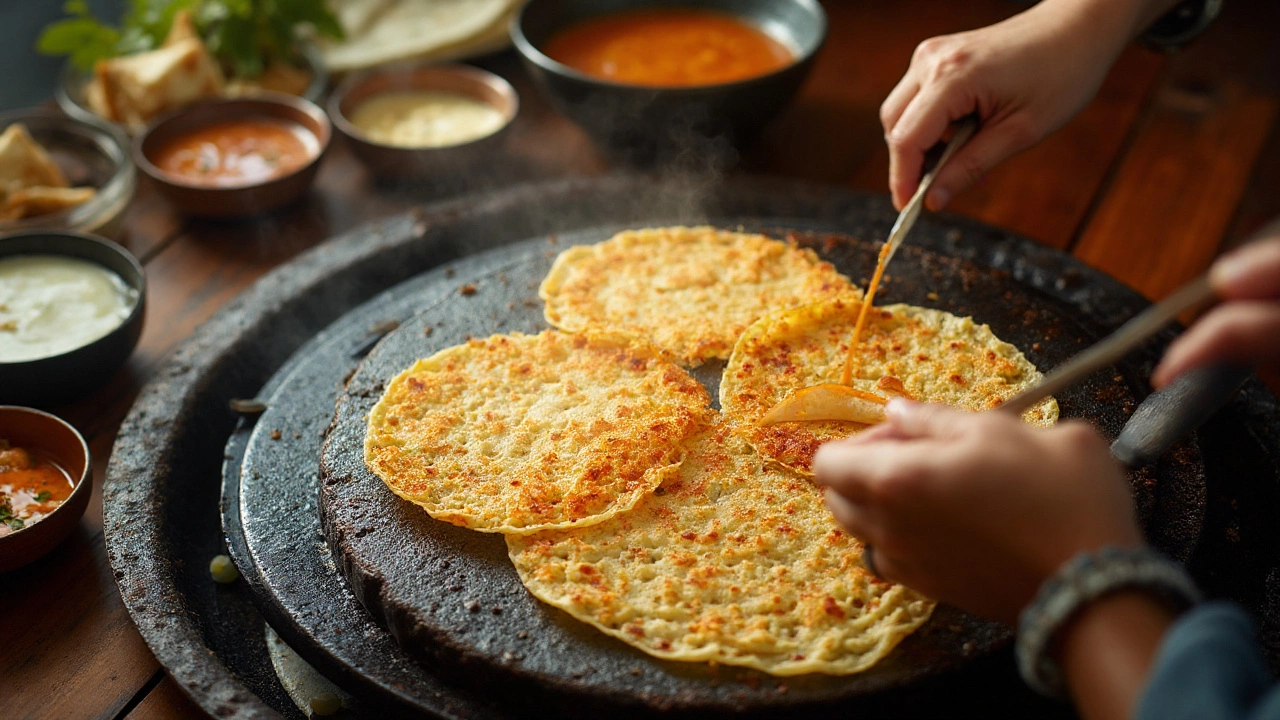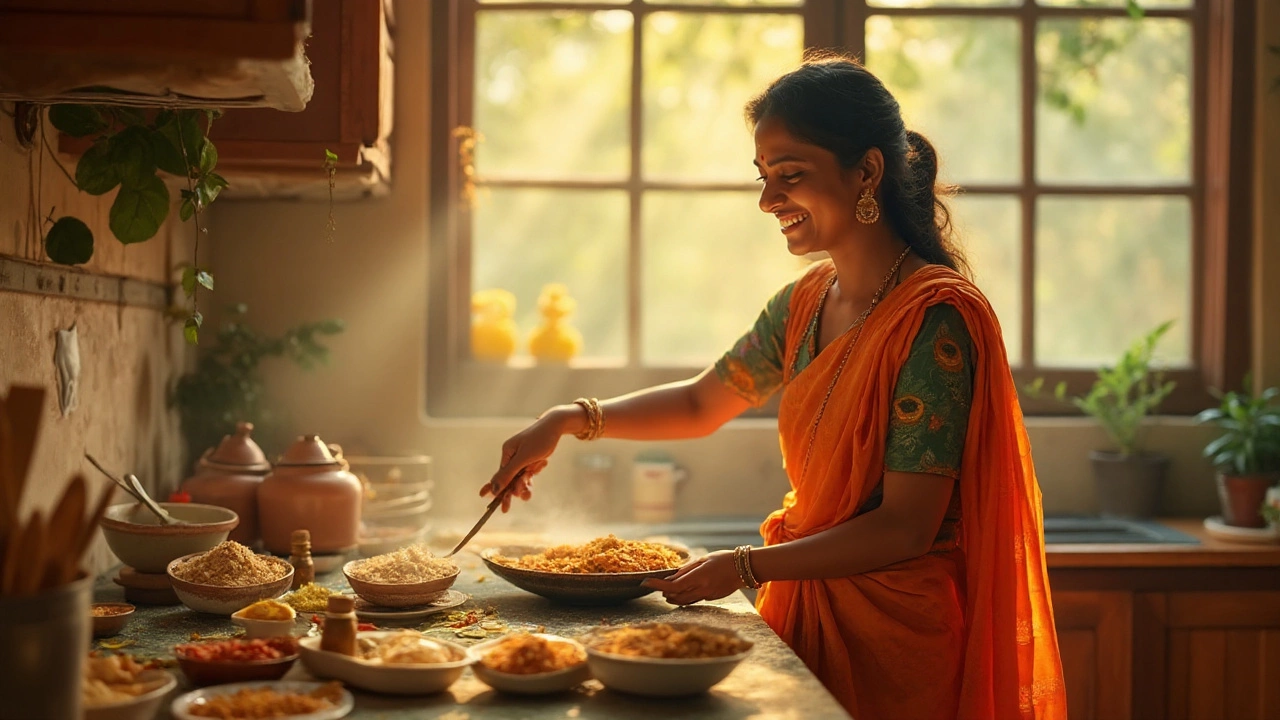Waking up craving crispy dosa only to realize the batter just won’t ferment? That’s a nightmare for any South Indian breakfast lover. But here’s the thing—those little yeasty bubbles aren’t the only ticket to a satisfying dosa day. All over India, home cooks have quietly spun out tricks for dodging the slow fermentation process, and you’ll be amazed at how close you can get to the real thing with a few kitchen hacks, smart ingredients, and a dash of patience (but not the overnight kind). Let’s break every rule in the book, have fun with chemistry, and cook up some awesome dosas—no fermentation drama required.
Understanding Fermentation and Why It Matters
Fermentation gives dosa its characteristic tang, airy bubbles, and that signature golden crust. Traditionally, dosa batter—rice soaked with split black gram (urad dal)—is left to ferment for 8-16 hours. Natural yeasts in the air break down starch, making the batter frothy and lightly sour. This doesn’t just help flavor. It makes a softer center and those iconic lacy holes. But the process is fickle: temperature, water, even bowl choice can mess with your rise. In places like Mumbai during steamy summers, the batter wakes up fast, but in Delhi winters, fermentation is stubborn and slow. Some folks wrap their bowls with towels or use oven lights to fake the perfect climate. Still, even with tricks, a cold snap or a last-minute plan can ruin the dosa party. That’s where instant solutions come in—and they’ve been around longer than you’d imagine.
History fact: In bustling Chennai or Hyderabad, restaurants serve dosas day and night, so skipping fermentation isn’t rare. Quick fixes evolved out of necessity, not just impatience. The science matters, because the tiny bubbles in fermented batter act like raising agents. Skipping them means you need substitutes to puff things up—and that’s where your kitchen pantry steps in.
Here’s the interesting part: the taste isn’t just from lactic acid (what develops during fermentation). The texture comes from both the proportions of dal-to-rice and the grinding technique. Wet-grinding actually tears starches apart, prepping them to trap air, more than dry, machine grinding. That’s why stone-ground batters always taste toastier and stretch better. But when you’re in a hurry, you don’t need to start with soaked grains at all. Your answer may already be stacked in your pantry with a red cap or a blue electric plug—think flattened rice, semolina, or even an old school hand blender. Most people have no clue you can hack the whole process so easily.
Instant Dosa Methods That Work
Okay, so your dosa dreams can’t wait. Let’s talk smart swaps for fermentation—each tried and tested in busy Indian kitchens:
- Baking Soda/Baking Powder: This is a classic substitution. Just 1/4 to 1/2 teaspoon added to your regular rice-urad batter (right before cooking) triggers an immediate reaction and releases CO2, bubbling up the mix. If you want a tangy flavor, add a tablespoon of yogurt.
- Lemon Juice & Curd: For a subtle sourness, a tablespoon of fresh lemon juice and 2 tablespoons of curd can mimic the gentle acidity of fermented batter. Mix this into your batter and let it rest 15 minutes—no need for hours of waiting.
- Sooji (Semolina) Dosas: If you keep semolina at home, you’re golden. Mix together 1 cup semolina, 1/4 cup rice flour, 1/4 cup yogurt, 1/2 teaspoon salt, and enough water to form a pourable batter. Rest for 20-30 minutes. You’ll get lacy, golden dosa with a crisp edge (sometimes called Rava dosa).
- Flattened Rice (Poha) Dosas: Blend 1/2 cup soaked poha with 1 cup rice flour, 1/2 cup yogurt, and water. This mixture, after a 20-minute rest, brings a surprisingly close taste to classic dosa.
- Eno Fruit Salt: Found in most Indian homes, Eno (a common antacid) acts like magic in instant dosas. Stir in 1/2 teaspoon right before spreading your batter on the tawa, and your dosa will puff with bubbles—super airy and soft.
Don’t just pick any option—choose based on what’s in your kitchen and how you like your dosa. If you’re after the classic taste, yogurt and lemon are best. Want crispness? Go for semolina or Eno. Each method delivers a slightly different dosa, so you might just find a new favorite.

Step-by-Step Recipes for Fermentation-Free Dosas
Let’s get kitchen-specific. Here are three foolproof approaches to instant dosa that make skipping fermentation painless, even fun. You don’t even need specialized equipment—a blender and a good nonstick tawa are enough.
-
Instant Rice Flour Dosa:
- In a large bowl, mix 1 cup rice flour, 1/2 cup all-purpose flour, 1 tablespoon yogurt, 1/2 teaspoon salt, and enough water to create a pourable batter—slightly thinner than pancake batter.
- Add 1/4 teaspoon baking soda right before pouring onto a hot, greased tawa.
- Spread the batter in a spiral, drizzle a little oil on the sides, and cook for 2-3 minutes per side until golden and crispy.
- Serve immediately with coconut chutney or your favorite sambar.
-
Rava (Semolina) Dosa:
- Combine 1 cup semolina, 1/2 cup rice flour, 1/4 cup finely chopped onions, 2 tablespoons yogurt, 1 chopped green chilli, 1/2 teaspoon black pepper, 1/2 teaspoon cumin seeds, salt, and 2 1/2 cups water.
- Let it rest for 20-30 minutes. The mixture should be very thin—almost watery.
- Heat a tawa. Splash a ladleful of batter around in a circle (not all at once). You’ll see lacy holes forming—don’t try to fill gaps.
- When the edges lift and turn golden, drizzle oil and flip. Cook until both sides are crisp. These dosas practically melt in your mouth!
-
Poha Instant Dosa:
- Soak 1/2 cup poha (flattened rice) in water for 10 minutes. Drain and blend with 1 cup rice flour, 3/4 cup yogurt, salt, enough water for pouring consistency.
- Let sit for 15-20 minutes. Stir in 1/2 teaspoon Eno or baking soda right before making.
- Spread thin on a hot tawa, cook until the underside is deep golden, flip, and finish the other side. Add ghee for a richer flavor.
Tip: Instant batters are more fragile. Oil your pan between dosas. Medium heat works best—too hot, and you’ll get burn marks; too cool, and your dosa sticks. And don’t be afraid to use extra oil, especially for rava dosa. That’s how you get those irresistible, crackling crisp edges.
Most of these batter recipes are handy for sudden guests or midnight cravings. If you’re worried about them lacking the signature tang, kefir or buttermilk can amp up the sourness even more. You can even leave the batter for a couple hours to develop flavor—fermentation is slower but still happens a bit, especially with warm yogurt or acidic ingredients.
Tips, Tricks, and Trouble-Shooting for Perfect Unfermented Dosas
Making dosas without fermentation isn’t just about swapping ingredients. Getting that perfect color, texture, and taste needs a little extra TLC. Here are some expert tips you rarely hear at the dinner table:
- Quality matters: Super-fine rice flour or cream of rice will make for smoother, softer dosas, while coarse flour gives a chewier bite. Don’t use broken rice for the flour—the starch just doesn’t behave the same way.
- The 15-minute rest rule: Even if you’re not fermenting, let your batter rest for at least 15 minutes after adding any raising agent. This gives the starches a chance to hydrate, helping the dosa brown evenly.
- Keep batter cool: Heat thickens up instant batters quick. If your kitchen’s warm, keep the batter bowl in a shaded spot. Otherwise, you’ll get gluey, flat dosas by the third round.
- Oiling the tawa: Use half a sliced raw onion dipped in oil to grease the pan. This old South Indian trick gives flavor and helps avoid sticking without over-greasing.
- Upgrade with toppings: No fermentation? Add fun instead: chopped coriander, green chillies, or grated carrots in the batter give a fresh vibe. You’re already breaking tradition—might as well dress things up.
- Salt at the end: For fluffier dosas, add salt just before making the dosa. Early salting can break down raising agents too soon—especially important if you’re using Eno or baking soda.
- Batch size: Dosa batter thickens as it sits. Only mix as much as you’ll use in a sitting. Store extra flour or semolina blend dry; just add water and yogurt when needed for next time.
- Don’t overcrowd the pan: Pour just a small ladle each time, spreading thin. Overloading means you’ll get stodgy, undercooked middles.
Still not convinced you can get a decent dosa without hours of patience? Take inspiration from Mumbai’s Udupi cafés, where staff churn out piles of hot, crisp dosas in minutes, right before the lunch rush—often using Eno as their secret weapon. If it’s good enough for the pros, it’s worth trying at home.
Here’s a quick nutrition fact: Traditional dosa (per serving, 80g) packs about 158 calories, less than most Western pancakes. With instant recipes, you sometimes use a bit more oil or yogurt, so up the protein, but calories barely bump up by more than 10-15% per portion. Here’s a side-by-side:
| Type | Calories | Protein (g) | Carbs (g) | Fat (g) |
|---|---|---|---|---|
| Traditional Dosa | 158 | 3.8 | 30 | 2 |
| Instant Rava Dosa | 172 | 4.2 | 32 | 3 |
So you’re not really sacrificing health for convenience. Actually, upping yogurt or semolina adds a probiotic bite and protein jolt, perfect way to make breakfast just as satisfying as the real deal.
Here’s something most people miss: The biggest dosa chains like Saravana Bhavan and Adyar Ananda Bhavan have secret blending ratios, often mixing in a bit of chana dal (split chickpea) or even a spoon of sugar for the deepest caramelized crust. No one will stop you from playing with these, even with instant batter—you do you.
And remember: If your first attempt turns out slightly less than Instagram-perfect, don’t sweat it. Dosa is one dish where imperfections become personality. Tear it up, dunk it in tangy chutney, and you’ll soon forget you missed out on fermentation time. You might even love this fast track so much, you’ll never bother setting a 12-hour reminder for batter again.
